Have your say
Summary of submissions for the draft Wellington Regional Growth Framework
Working together to plan for our future
Thanks for all your feedback during the consultation which closed in May 2021. Below is the summary of your feedback and what is happening with that information.
Number of Submissions
There were 79 submissions through the online submission form during the engagement period. Many of the submissions were from people protesting about a particular greenfield development in the region. A small number of submissions were received from other people in the region.
In addition, we received submissions from:
Horizons Regional Council
Regional Public Health
Transpower
Kai and our Community Regional Food Network
The Guildford Timber Company
The key themes from the feedback were:
Greenfield development should not be considered.
The focus on urban renewal, increased density, transit-oriented development/building around train stations, more active transport options, are all very positive and logical.
The environment is important and needs to be considered in line with urban development.
There is support for the key moves in the Wellington Regional Growth Framework.
Provision of infrastructure needs to be considered
The focus on building communities and neighbourhoods was the most supported aspect of the framework.
Apart from the greenfield theme, most submissions support the general direction of the Wellington Regional Growth Framework. The feedback on greenfield development was related more to a specific development.
We recommended only minor amendments for the Wellington Regional Leadership Committee to consider at their meeting on 1 July 2021 – see pages 45-54 of the attached report.
We’ve outlined the key themes from the feedback along with comments and recommended changes below.
Theme |
Comments |
Recommended changes to the WRGF |
| Key themes from online survey | ||
| Greenfield development should not be considered | Most comments in this section of the online form were specifically about opposing the Southern Growth Area in Upper Hutt. The draft WRGF includes greenfield areas such as the Southern Growth Area that are already identified in a growth plan and/or district plan of a council. This identified area is still an area of focus for Upper Hutt City Council.
There was one individual submission separate from the online submissions that supported the greenfield development in this area. The Multi-Criteria Assessment (MCA) undertaken as part of the options assessment process for the draft WRGF showed that whilst development in greenfield areas does not rate well against a number of WRGF objectives, it does rate well for adaptation to climate change and avoiding further development in areas at risk from natural hazards and provides options for this for the region. The National Policy Statement on Urban Development (NPSUD)1 includes a clause that applies to a plan change that provides significant development capacity that is not otherwise enabled in a plan or is not in sequence with planned land release – every local authority must have regard to this development capacity. I.e., local authorities cannot ignore greenfield development opportunities. Whilst most of the development opportunity in the draft Framework is in already established areas, for the region to respond to the level of growth anticipated, both brownfield and greenfield developments are required. |
No changes proposed.
The Southern Growth Area is still an identified area with regard to Upper Hutt City Council planning and should remain identified as such in the final WRGF. The particular issue raised by a number of submitters regarding the Southern Growth area and the submission in support is a matter for decision for Upper Hutt City Council as part of their District Plan processes. |
| The focuses on urban renewal, increased density, transit-oriented development/building around train stations, more active transport options, are all very positive and logical | The NPSUD requires increased density around rapid transit networks for most of the region.
The MCA undertaken as part of the options assessment in the draft WRGF supports increased development around rapid transit networks. The Government Policy Statement (GPS) on Transport and the focus and targets of the Regional Land Transport Plan both have a focus on increasing public transport and mode shift. Comments in the feedback included:
|
No changes proposed.
This aspect is well reflected in the draft WRGF and submissions reflected our focus on this. Comments under this theme support the direction of the WRGF. |
| The environment is important and needs to be considered in line with urban development | Comments in the feedback included those such as:
|
No changes proposed.
This aspect is well reflected in the draft WRGF and submissions reflected our focus on this. Challenge 2 in the WRGF is – “Many of the urban areas in the region are vulnerable to the impacts of natural hazards and climate change, and as the region grows and becomes more densely settled, it will become increasingly important to improve resilience and protect and enhance the region’s natural environment”. |
| There is support for the key moves in the WRGF | Four of the six key moves were either partially supported or fully supported – results ranged from 74.6%-91.3% (partially and fully supported combined).
The other two key moves had a component of greenfield in them and are impacted by the responses related to the Southern Growth Area i.e., over 80% of the “do not support” responses for these two elements came from Upper Hutt residents. |
No changes proposed. |
| Provision of infrastructure needs to be considered | A range of comments regarding infrastructure were provided in the feedback including comments related to pipes, power supply, retrofitting housing to achieve low energy housing and renewable energy. | Change proposed
Add reference to renewal energy in discussions on infrastructure/energy |
| The focus on building communities and neighbourhoods was the most supported aspect of the framework | 70% of respondents supported this aspect. | No changes proposed |
| Feedback from individual submissions | ||
| Lack of reference to Horizons “One Plan” and Horowhenua being in the Horizons region | Information was sourced from Horowhenua District Council for the WRGF and included information from Horizons Regional Council e.g., the constraints mapping.
Additional references as suggested can be added to the WRGF. |
Change proposed
Add comment about Horowhenua being in the Horizons region. |
| Support for regional food strategy and suggest bringing this work forward | Groups related to food strategy/food distribution/food systems have been action in the project scoping phase of the WRGF and their thoughts are reflected in a number of project scope documents. | No changes proposed.
The Regional Food Strategy is identified already as a key initiative. The timing of this project is the subject of another paper for the WRLC. Timeframes for projects are not included in the WRGF. |
| In a spatial planning sense existing electricity infrastructure will need to be protected, and there may be a need for new and upgraded electricity infrastructure in the region too. The former has been referenced within the draft growth framework, but the latter is not. | Specific requests in a submission are below: Page 5 add new objective under Diagram 2: Objectives to Initiatives diagram: “Recognise and provide for electricity infrastructure within the region to support urban growth and the Government’s 2050 net zero carbon emissions target”.
Page 5 add reference to electricity infrastructure under “Key Initiative Areas”. Page 10 final paragraph at bottom left of page, add text as follows: “Electrification of the economy in pursuit of the Government’s 2050 net zero carbon emissions target means that the region’s critical electricity infrastructure will need to be protected and may need to expand. Electricity infrastructure is also vital to supporting the urban growth that this framework is planning for.” Page 14 add further text as follows: “The Wellington-Horowhenua region hosts the National Grid, which is nationally significant electricity infrastructure. It serves the region itself and provides a vital link in the electricity system between the north and south islands via the Cook Strait cable. This infrastructure passes through a range of environments within the region and needs to be protected from inappropriate subdivision, use and development. It can also present a constraint to urban growth that will need to be accounted for in growth forecasts.” Page 17 add text to end of last paragraph, as follows: “Another part of achieving emissions reductions is via increased renewable energy generation and increased use of electrification (e.g. for transport and process heat). In the future, this could involve upgrading existing or building new electricity infrastructure within the region.” |
No changes proposed. The six objectives for the WRGF were developed in a collaborative manner and should remain as is.
Change proposed – combine point with other points on 3 waters infrastructure. There is a project related to this. Partial change proposed – electricity infrastructure will be added to the 3rd paragraph on that page that currently mentions 3 waters infrastructure. Partial change proposed – this para is too large to fit in with the other material on this page – a shorter statement can be made on this page or elsewhere. Partial change proposed – this para is too large to fit in with the other material on this page – a shorter statement can be made on this page or elsewhere. |
1 Policy 8: Local authority decisions affecting urban developments are responsive to plan changes that would add significantly to development capacity and contribute to well-functioning urban environments, even if the development capacity is a) unanticipated by the RMA planning documents; or b) out-of-sequence with planned land release.
Want to know more?
Check out the full draft Framework or email us your questions to admin@wrgf.co.nz.
Sign up for updates.
Quick Links


